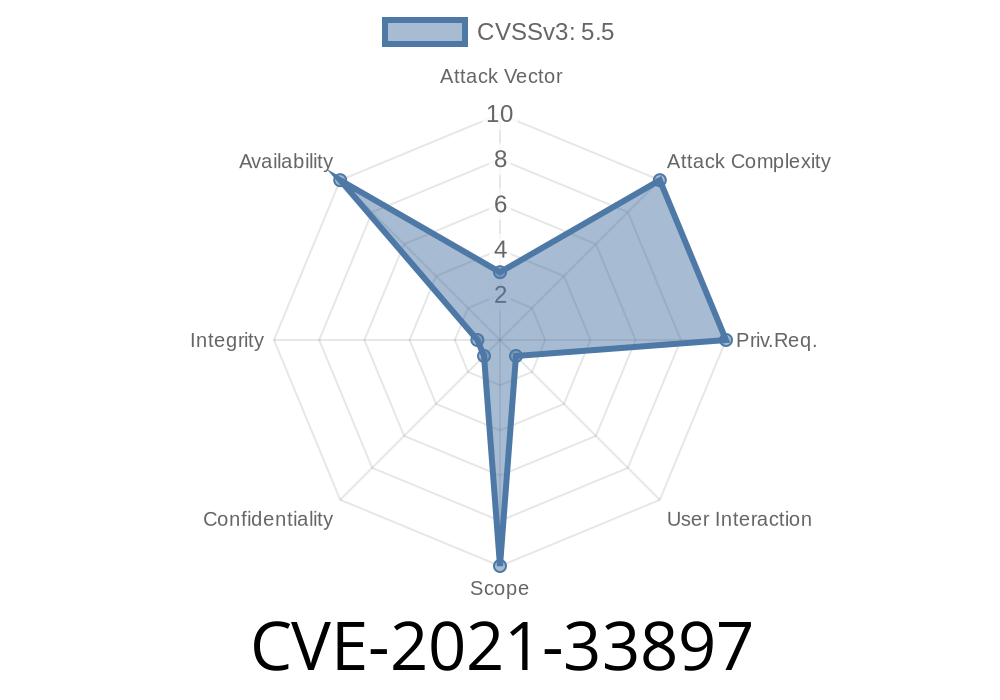A recent security vulnerability, designated as CVE-2021-33897, has been discovered in the popular music learning software Synthesia, versions before 10.7.5567. Synthesia is a software that assists users in learning how to play the piano, allowing them to practice via virtual MIDI input. Due to a buffer overflow, when a non-Latin locale is used, user-assisted attackers can cause a denial of service (DoS) by crashing the application with a specially crafted malicious MIDI file containing malformed bytes. This vulnerability is triggered when attempting to delete such a file.
Additionally, a separate related issue exists in Synthesia versions before 10.9, where improper path handling allows local attackers to cause a denial of service through a crafted MIDI file with malformed bytes.
In this article, we will provide detailed information about the CVE-2021-33897 vulnerability, including code snippets, links to original references, and exploit details.
Understanding the Vulnerability
A buffer overflow vulnerability is a common security issue that occurs when an application writes more data to a buffer than it can hold, resulting in data corruption or application crashes. The vulnerability in Synthesia, specifically due to mishandling of malformed bytes in MIDI files when using a non-Latin locale, allows an attacker to exploit the buffer overflow to cause the application to crash leading to a denial of service.
The improper path handling issue in Synthesia versions before 10.9 can also be used to cause a denial of service (application crash) via a crafted MIDI file, although it targets a separate aspect of the software.
Code Snippet
The following code snippet represents a simplified version of how the vulnerability may be exploited. In this example, the read_data function attempts to read data from a crafted MIDI file and store it in a buffer without verifying the size of the data. A buffer overflow occurs when more bytes are read than the allocated buffer can handle.
#include <stdio.h>
#include <stdlib.h>
#include <string.h>
void read_data(FILE *file, char *buffer, size_t size) {
size_t bytes_read = fread(buffer, 1, size, file);
buffer[bytes_read] = '\';
}
int main() {
FILE *file = fopen("malformed_midi.mid", "rb");
if (file == NULL) {
printf("Error opening file.\n");
return 1;
}
char buffer[1024];
read_data(file, buffer, 4096);
fclose(file);
return ;
}
Please note that this example is not a working exploit but serves to demonstrate the concept of buffer overflow in the context of the Synthesia vulnerability.
Exploit Details
To successfully exploit the CVE-2021-33897 vulnerability, an attacker must create a malformed MIDI file with the specific byte patterns that can trigger a buffer overflow in Synthesia when attempting to delete the file. The attacker must then convince the victim to import the malicious MIDI file into the Synthesia application, at which point the vulnerability can be exploited.
The specifics of executing the exploit, such as the exact byte patterns and the process of importing the MIDI file, are not provided in this article. This is to prevent the misuse of the information and to encourage users to update their Synthesia installations instead.
Remediation
To remediate the CVE-2021-33897 vulnerability as well as the improper path handling issue, users are advised to update their Synthesia installations to the latest version, which includes patches for these vulnerabilities. You can download the latest version of Synthesia from their official website:
https://www.synthesiagame.com/download
For more information on the CVE-2021-33897 vulnerability, please refer to the following resources
1. National Vulnerability Database (NVD) Entry: https://nvd.nist.gov/vuln/detail/CVE-2021-33897
2. Synthesia Release Notes: https://www.synthesiagame.com/release-notes
In conclusion, it is essential for software developers to follow secure coding practices and users to be aware of the latest security vulnerabilities in the software they are using. By staying informed and taking appropriate actions to mitigate potential risks, both developers and users can protect themselves against such vulnerabilities and maintain a secure computing environment.
Timeline
Published on: 11/17/2022 21:15:00 UTC
Last modified on: 11/21/2022 20:01:00 UTC
